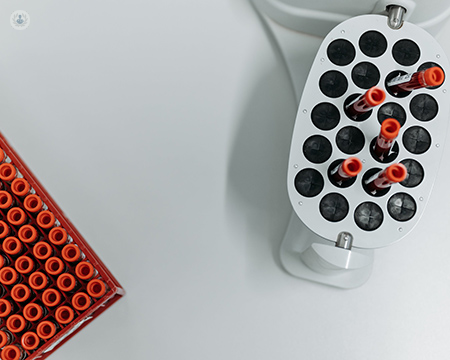Sirolimus analysis
What is analysed?
Sirolimus, also known as rapamycin, is a medication that belongs to a class of drugs called mTOR inhibitors. The analysis involves measuring the concentration of sirolimus in a patient's blood to ensure it is within the therapeutic range.

What does the result mean?
The result indicates the amount of sirolimus present in the bloodstream. This information is crucial for optimising the dosage, preventing toxicity, and ensuring therapeutic efficacy.
Why perform the analysis?
Analysing sirolimus levels is essential for therapeutic drug monitoring. It helps healthcare providers adjust the dosage to maintain a balance between preventing rejection in organ transplant recipients and minimising potential side effects.
When to conduct the analysis?
Sirolimus analysis is typically performed at regular intervals after initiating treatment or adjusting the dose. The timing may vary based on individual patient factors and the specific medical situation.
What sample is required?
A blood sample is required for sirolimus analysis. Venous blood is commonly drawn, and the sample is sent to the laboratory for testing.
Is any prior preparation necessary?
No specific prior preparation is usually needed. However, it's essential to inform the healthcare provider about any medications or supplements being taken, as they may interfere with the analysis.
How is it used?
The sirolimus analysis helps healthcare professionals ensure that the drug is at a therapeutic level. If levels are too low, the risk of rejection increases; if too high, there's an elevated risk of adverse effects. Adjustments to the treatment plan can be made based on the analysis results.
What are the normal values?
The therapeutic range for sirolimus varies, but generally falls between 4 to 12 ng/mL. However, individual institutions or healthcare providers may have slightly different target ranges based on the patient's specific condition.
Sirolimus Analysis Results (ng/mL)
|
Interpretation |
Sirolimus Levels |
|---|---|
|
Below Therapeutic Range |
< 4 |
|
Therapeutic Range |
4 - 12 |
|
Above Therapeutic Range |
> 12 |
What does it mean to have altered values?
- Below therapeutic range: Indicates a risk of organ rejection. A dosage adjustment or reevaluation of the treatment plan may be necessary.
- Within therapeutic range: Suggests an optimal balance between preventing rejection and minimising side effects.
- Above therapeutic range: Poses a risk of toxicity and potential side effects. Dosage reduction or discontinuation may be considered.